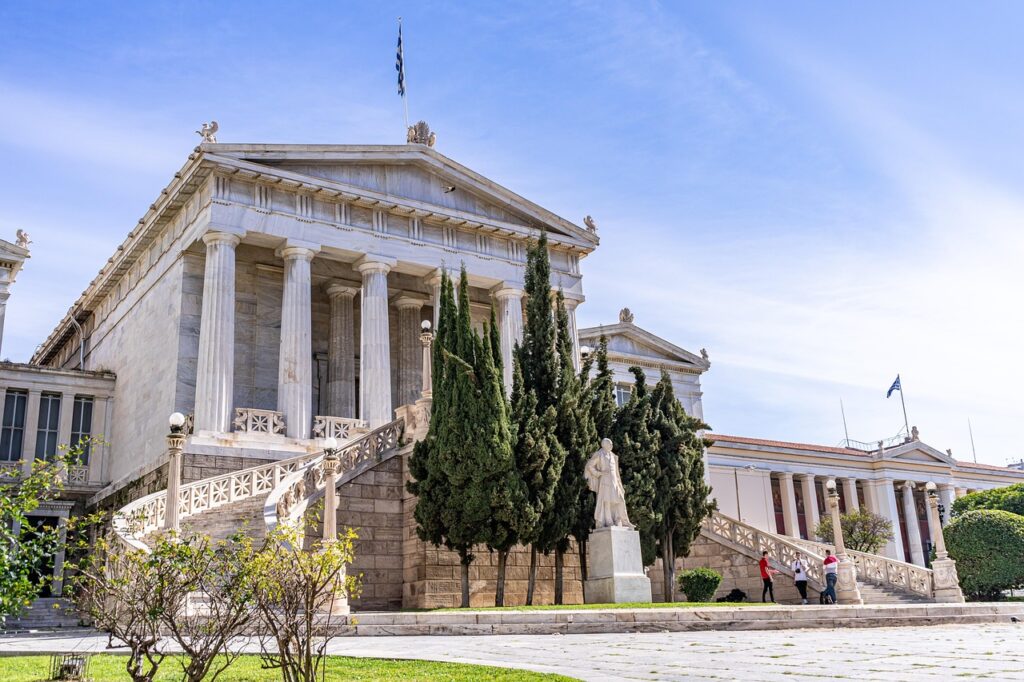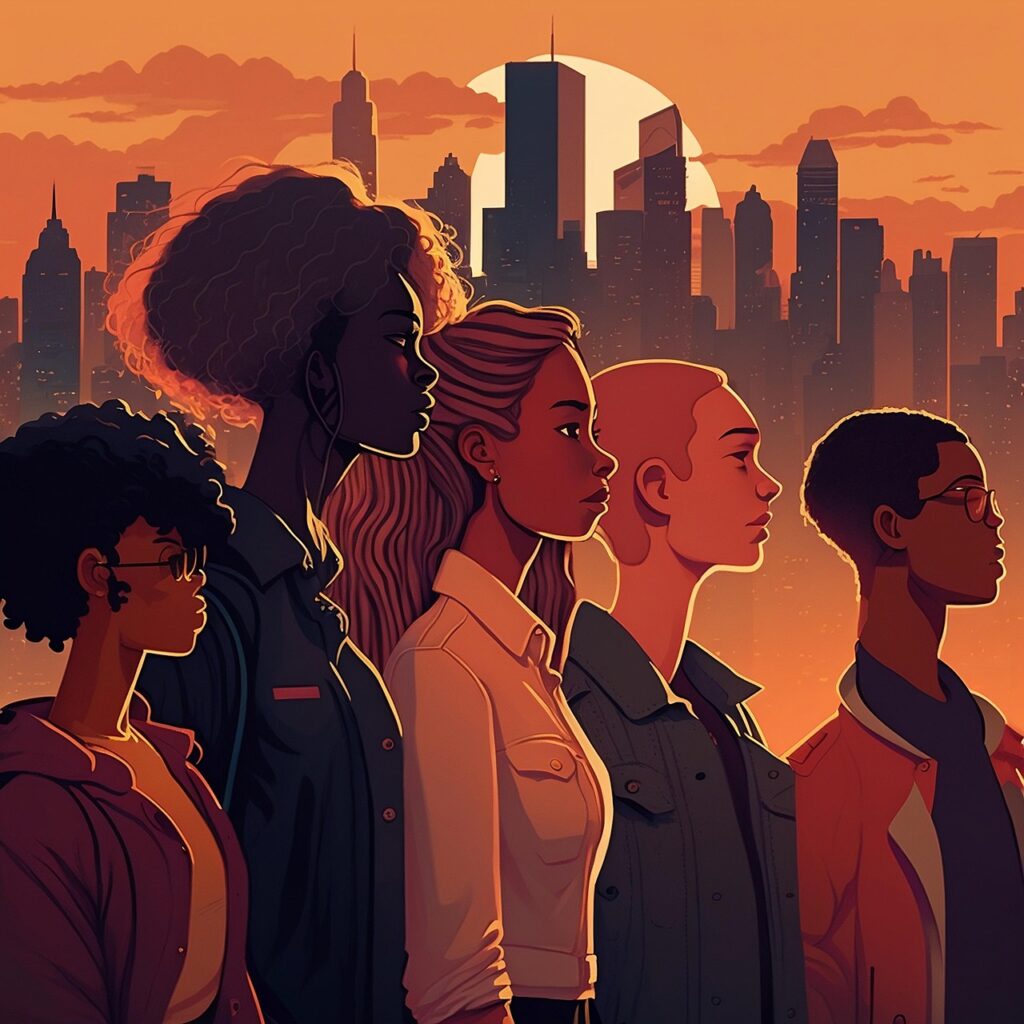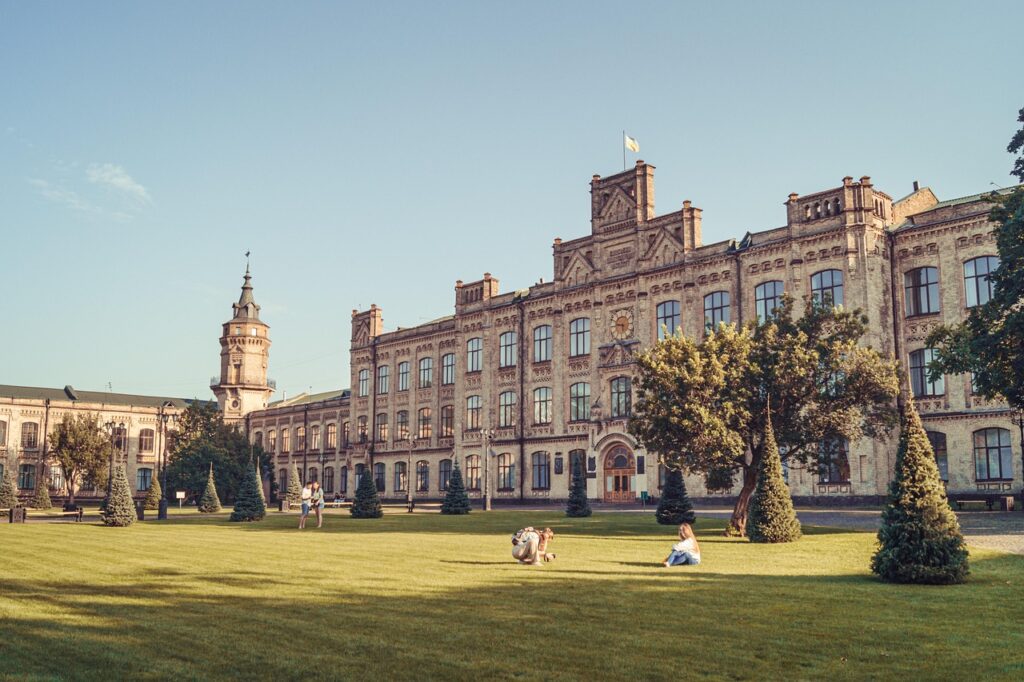
Vivian Ayers Allen, a luminary whose life spanned over a century, recently departed at the age of 102, leaving behind a profound legacy as a Pulitzer-nominated poet, a visionary cultural activist, and the revered matriarch of a family that includes the acclaimed artists Debbie Allen and Phylicia Rashad. Her journey, rooted in the Jim Crow South and blossoming into a multifaceted career, exemplifies an unwavering commitment to intellectual pursuit, artistic expression, and social justice. Allen’s life was a testament to the transformative power of creativity and an insistent belief in the boundless potential of individuals, particularly within marginalized communities.
Her narrative is not merely a chronological account but a tapestry woven with prescient poetry, pioneering academic achievements, and a relentless dedication to fostering the arts. From her early education at a historically Black institution to her groundbreaking work in literature and academia, Allen consistently pushed boundaries and cultivated environments where creativity could flourish. This in-depth look at the initial chapters of her remarkable life illuminates the foundational experiences and early accomplishments that set the stage for her enduring impact on American culture and beyond.
This section will delve into seven critical aspects of Vivian Ayers Allen’s early life and foundational contributions, charting her trajectory from a student in a segregated South to an emerging literary figure and an influential force in the cultural landscape of Houston. We will explore the intellectual currents that shaped her, the genesis of her acclaimed poetic works, her pivotal role in nurturing the artistic destinies of her children, and her significant strides in integrating and enriching academic and artistic institutions.

1. **Early Life and Foundational Education**Vivian Elizabeth Ayers Allen was born on July 29, 1923, in Chester, S.C., into a community where the pursuit of education was a cornerstone for advancement, particularly for African Americans. Her parents, Robert D. Ayers, a blacksmith, and Vivian (Graham) Ayers, a seamstress, provided a supportive environment that fostered intellectual curiosity. This early foundation proved crucial in shaping her worldview and instilling in her a deep appreciation for learning.
Her educational journey began at the Brainerd Institute, a boarding school established in 1866 for the children of formerly enslaved people, located directly across the street from her childhood home. This historic institution, where her parents and grandparents had also studied, provided a rigorous curriculum. At Brainerd, Ayers Allen immersed herself in classical literature, studying Milton and Shakespeare under the guidance of a racially integrated faculty, and also learned Latin and French, alongside concert piano. She graduated in 1939 as a member of the final high school class from the institution, marking the end of an era for the school, but the beginning of her expansive intellectual life.
Following her time at Brainerd, Ayers Allen continued her higher education at two historically Black colleges in North Carolina: Barber-Scotia College in Concord and Bennett College in Greensboro. These institutions further cultivated her intellectual breadth and commitment to social engagement. Later in life, her academic excellence and societal contributions were recognized with honorary doctorate degrees from Wilberforce University in 1995 and her alma mater, Bennett College, in 2006, underscoring the profound and lasting impact of her foundational educational experiences.
Read more about: Jack Betts, Versatile Actor from Broadway to ‘Spider-Man’ and Spaghetti Westerns, Dies at 96

2. **Emergence as a Poet: “Spice of Dawns”**Vivian Ayers Allen’s literary journey commenced officially with the publication of her debut poetry collection, “Spice of Dawns,” in 1952. This work, published by Exposition Press while she was an aspiring writer in Houston on the cusp of divorce, immediately garnered significant critical attention. The collection showcased her distinctive poetic voice, which often employed prose paragraphs with frequent use of dashes and ellipses, and drew deeply from the culture and religion of the American South.
The impact of “Spice of Dawns” was swift and substantial, earning her a Pulitzer Prize nomination in 1953. This recognition placed her among the literary elite of her time, sharing the spotlight with celebrated authors of that year. Ernest Hemingway, for instance, won the fiction prize for “The Old Man and the Sea,” and William Inge received the drama prize for “Picnic.” The poetry award that year went to Archibald MacLeish, one of his three Pulitzers, highlighting the competitive and distinguished company in which Ayers Allen’s work was considered.
Her nomination was a remarkable achievement, particularly for a Black woman artist forging a career in the arts at a time when mainstream cultural institutions largely overlooked such voices. The collection included poems that would later be recognized, such as “On Status,” which vividly captured her appreciation for her rural home after experiencing New York City. This early success established Ayers Allen not just as a poet, but as a significant literary figure whose distinct voice resonated deeply within the broader American literary landscape.
3. **Prophetic Vision in “Hawk”**Five years after her Pulitzer nomination, Vivian Ayers Allen self-published “Hawk” in 1957, a book-length poem that stands as a remarkable testament to her prophetic vision and artistic daring. This allegorical verse novel, set in the year 2052, explored themes of racial freedom, personal struggle, and responsibility, all from the unique perspective of a hawk venturing into outer space. The poem linked the freedom of flight with the then-nascent possibility of space travel, showcasing an extraordinary foresight.
The prescience of “Hawk” became undeniably evident just 11 weeks after its publication, when the USSR launched Sputnik I. This event, marking the first artificial satellite sent from Earth into orbit, dramatically underscored Ayers Allen’s forward-thinking conceptualization of humanity’s journey into the cosmos. The poem’s uncanny timing and thematic depth earned it significant praise, including from the National Aeronautics and Space Administration (NASA), which described Allen as “a distinguished woman of Apollo, whose remarkable contributions significantly advanced our understanding of space exploration.” Enlarged reproductions of select lines from “Hawk” were later exhibited at the Lyndon B. Johnson Space Center in Houston, Texas, a powerful acknowledgment of her artistic and intellectual contribution to the national narrative of space exploration.
Decades later, in 2023, Clemson University Press formally republished “Hawk,” based on an exemplar of the original self-published version. This republication brought renewed attention to a work that not only foreshadowed a major technological leap but also offered a profound “documentation of the process of transcendence,” as Ayers Allen herself described it. An excerpt from “Hawk” also appeared in Langston Hughes’s 1964 anthology, “New Negro Poets U.S.A.,” further cementing its place in African American literary history and highlighting its enduring relevance and impact.
Read more about: Beyond the Algorithm: Decoding ChatGPT’s Chilling Predictions for Humanity’s Future – And Our Role in Shaping It

4. **Nurturing Artistic Legacies: Mother to Debbie Allen and Phylicia Rashad**Beyond her significant literary and academic accomplishments, Vivian Ayers Allen is celebrated for her profound role as a mother, meticulously nurturing the artistic talents of her children. She raised four children with her former husband, dentist Andrew Allen: Andrew “Tex” Allen Jr. (a jazz musician), Debbie Allen (a Broadway actress, director, choreographer, and dancer), Hugh Allen (regional president of TD Bank), and Phylicia Rashad (a Tony Award-winning Broadway actress and co-star of “The Cosby Show”). All but Hugh would go into the performing arts, a testament to the creative environment she fostered.
Despite growing up with limited financial resources and facing the pervasive challenges of racial segregation in the Jim Crow South, Ayers Allen instilled in her children an unwavering belief in their creative potential. Debbie Allen, reflecting on her upbringing in 2018, recalled, “We grew up with not a lot of money. We grew up with racial segregation. We grew up not being able to go to ballet class or downtown to a restaurant or to a movie.” She added, “And so my mother, Vivian Ayers, always made us believe that we were part of a universe that welcomed us and wanted our creativity and was waiting for us to do something good. And so we’ve been doing that forever.” This philosophy underscored her proactive approach to circumventing systemic barriers.
Ayers Allen actively facilitated her children’s artistic development, often making extraordinary sacrifices. Phylicia Rashad famously recounted how their mother transformed their home into a makeshift ballet studio for Debbie: “My mother took the handrail off the staircase and put it on the wall in what should have been the dining room to create a ballet studio for Debbie to study with a dance instructor privately when she could not be admitted to the best schools that were on the other side of town in Houston.” This private training eventually led to Debbie’s admission to the Houston Ballet Foundation. Ayers Allen’s constant teaching and inclusion of her children in her own intellectual and artistic endeavors, such as having a young Phylicia collate pages for her second book, ensured that creativity was an inherent part of their daily lives. She told Rashad that acting made her one of the “magic” people, stating, “You create so much out of nothing,” a powerful validation of their chosen paths.

5. **Pioneering Role at Rice University**Vivian Ayers Allen’s commitment to intellectual pursuits extended into the academic realm, where she broke significant barriers. In 1965, she joined Rice University in Houston, Texas, initially working as a librarian. Her tenure there quickly evolved, and by 1966, she achieved a landmark distinction: becoming the university’s first full-time Black faculty member. This appointment was a testament to her scholarly capabilities and a significant step forward for diversity in higher education during a period of widespread racial discrimination.
Her role at Rice was not merely administrative but deeply engaged with the institution’s intellectual life. While working as a librarian, she contributed to the academic environment, bringing her wide-ranging expertise to the university. This was at a time when Black women, particularly in the South, were largely invisible to mainstream cultural institutions. Her presence and contributions helped pave the way for future generations of Black scholars and faculty members in historically white institutions.
However, her commitment to social justice ultimately led her to pivot from this pioneering academic role. Inspired by the burgeoning civil rights movement and widespread protests, Ayers Allen made the consequential decision to quit her job at Rice in 1967. She chose to dedicate her energies to poverty and cultural initiatives across Harris County, the home of Houston, demonstrating that her scholarly endeavors were inextricably linked to her broader mission of community upliftment and advocating for the underrepresented.
Read more about: Beverly Cleary’s Unforgettable Journey: From Klickitat Street to Literary Legend at 104

6. **Literary Entrepreneurship: The Adept Quarterly**Vivian Ayers Allen’s multifaceted engagement with the arts extended beyond her personal poetic and dramatic creations into the realm of literary entrepreneurship. Recognizing the need for platforms that celebrated diverse voices and artistic expressions, she founded *The Adept Quarterly* literary magazine in 1971. This venture was a direct reflection of her commitment to fostering a vibrant and inclusive artistic community, particularly in Houston where she had become a prominent figure in the local arts scene.
Prior to establishing *The Adept Quarterly*, Ayers Allen had already been active in the Houston arts landscape, joining various community organizations and organizing poetry readings, including one notably featuring the visiting boxer Muhammad Ali. These experiences underscored her understanding of the power of collective artistic endeavor and the importance of creating spaces for dialogue and performance. *The Adept Quarterly* served as a formal extension of this vision, providing a critical avenue for writers and artists.
Though described as a “short-lived literary quarterly” when launched in 1964 with assistance from the young novelist Larry McMurtry, its impact was notable. It published verse by esteemed poets such as Vassar Miller, who would later become the poet laureate of Texas, and featured paintings by the Trinidadian-American actor and artist Geoffrey Holder. The magazine, irrespective of its duration, demonstrated Ayers Allen’s proactive role in curating and amplifying significant artistic talent, further solidifying her reputation as a cultural architect and a staunch advocate for minority artists in the American South.

7. **Contributions as a Playwright**Vivian Ayers Allen’s creative output was not confined to poetry; she also distinguished herself as a playwright, bringing a unique intellectual and cultural sensibility to the stage. Her first play, “Bow Boly,” exemplified her fascination with classical literature, specifically Greek drama, which she had first read in high school. Ayers Allen herself described “Bow Boly” as “structurally up and out of the Greek drama,” indicating a conscious effort to blend ancient theatrical traditions with contemporary themes.
“Bow Boly” was presented at Texas Southern University, a historically Black college in Houston, further demonstrating her commitment to engaging with and contributing to Black cultural institutions. The play followed a man determined to mend a broken heart, with the narrative enriched by a chorus of ancestors from Virginia, depicted as being stuck in purgatory. This intriguing premise showcased Ayers Allen’s ability to weave complex spiritual and emotional narratives into a compelling theatrical experience, reflecting both her academic depth and her Southern roots.
Her playwrighting continued with “The Marriage Ceremony,” a work from 1973 that delved into the sociological and cultural aspects of African-American marriage ceremonies. This play explored the concept of communal or “tribal” involvement in these significant life events, offering insights into community bonds and traditions. Through her theatrical works, Ayers Allen not only entertained but also used the stage as a medium for intellectual inquiry and cultural commentary, leaving an indelible mark on the performing arts.
This second section offers a detailed examination of Vivian Ayers Allen’s broader activism, her entrepreneurial ventures in the arts, her global academic pursuits, her enduring impact through the Brainerd Institute Heritage, and the lasting resonance of her poetry in contemporary culture, covering seven pivotal facets of her life that further illuminate her remarkable journey and widespread influence.
Read more about: Ozzie Rodriguez, La MaMa’s Visionary Archivist and Artistic Force, Dies at 81: An In-Depth Tribute

8. **Activism and Community Engagement in Houston**Vivian Ayers Allen’s commitment to social justice extended far beyond her individual artistic pursuits, blossoming into a vibrant career in community activism, particularly in Houston. After her pivotal decision to leave Rice University in 1967, motivated by the burgeoning civil rights movement, she dedicated her formidable energies to a range of poverty and cultural initiatives across Harris County. This shift underscored her belief that art and education were not luxuries but essential tools for community upliftment and advocating for the underrepresented.
Her activism often took the form of direct engagement with pressing social issues. Ayers Allen was known for submitting letters to the editor, vociferously denouncing police violence, demonstrating her unwavering stance against injustice during a turbulent period in American history. This proactive approach to public discourse was indicative of her broader philosophy: to not only create art that reflected society but to actively work towards its betterment. Her involvement with community organizations in Houston solidified her reputation as a cultural architect.
One of her most impactful ventures was the establishment of “Workshops in Open Fields,” a program conceived in collaboration with the Harris County Community Association and certified teachers in 1973. This initiative was designed to teach literacy through the arts to preschool children, recognizing the fundamental link between creative expression and foundational learning. The program’s success led to its recognition by the National Endowment for the Arts as a model for community engagement, highlighting Ayers Allen’s innovative and practical approach to educational reform and social empowerment.
9. **Global Intellectual Exploration in Mexico**Vivian Ayers Allen’s pursuit of knowledge was not confined by geographical or cultural boundaries, leading her and her children to Mexico for a transformative period of global intellectual exploration. She made the deliberate decision to move her children to Mexico for a year, offering them new experiences away from the “racist” American South and broadening their perspectives in invaluable ways. This period was not merely a change of scenery but a profound immersion in a different cultural and academic landscape.
During their time in Mexico, Ayers Allen herself delved deeply into academic studies, pursuing her lifelong fascination with Greek literature, which she had first encountered in high school. Beyond classical studies, she expanded her intellectual horizons to include the rich tapestry of Mayan culture and Mesoamerican Math-Astronomy, showcasing her diverse scholarly interests and her dedication to understanding ancient civilizations. Her intellectual rigor and curiosity were evident in her continuous quest for learning.
The move also profoundly impacted her children, who learned to speak Spanish and were exposed to the vibrant arts scene, including attending ballet performances by Mexican dancers. Notably, her daughter Debbie Allen, who would become a trailblazing choreographer and dancer, had the opportunity to dance with the Ballet Nacional de México during this formative period. This international experience, meticulously orchestrated by their mother, exemplified Ayers Allen’s commitment to providing a holistic and culturally rich education, ensuring her children developed a broad worldview and a deep appreciation for global artistic expressions.
Read more about: Joseph Charles Hickerson (1935–2025): A Resonant Life Dedicated to America’s Folk Song Preservation and Performance

10. **Founding the Adept Gallery and Museum**Vivian Ayers Allen’s entrepreneurial spirit in the arts evolved significantly through her creation of physical spaces dedicated to the exhibition and preservation of diverse cultural expressions. Building upon her earlier literary ventures, she founded the Adept Gallery for New American Folk Art. This gallery, established through a grant from the National Endowment for the Arts, specifically focused on showcasing mixed-media works by Black, Indigenous, and Hispanic Americans, filling a crucial void in mainstream cultural institutions that often overlooked these voices.
The Adept Gallery, praised by Eleanor Freed, an art critic for The Houston Post, in 1972 as “a tiny oasis of thought and creativity,” served as a testament to Ayers Allen’s vision for an inclusive art world. It was a space where underrepresented minority artists could gain visibility and where their unique contributions to the American cultural fabric were celebrated. Her work with the gallery highlighted her commitment to curating and amplifying voices that were historically marginalized, creating a platform for artistic dialogue and appreciation.
In 1984, Ayers Allen extended this vision by moving to Mount Vernon, N.Y., where she established the ADEPT New American Museum of the Southwest from her home. As its director-curator, she continued to organize seminars and exhibitions, focusing on art, artifacts, and dance styles from the American Southwest. This museum was a further embodiment of her dedication to supporting underrepresented minority artists and stressing the contributions of both African-Americans and Indigenous American peoples to the arts, demonstrating her enduring commitment to cultural preservation and artistic equity.
11. **The Brainerd Institute Heritage: Preservation and Education**Vivian Ayers Allen’s most deeply personal and enduring legacy is arguably her work with the Brainerd Institute Heritage, a testament to her commitment to preserving the historical significance of her alma mater and advancing educational opportunities for future generations. The journey to revitalizing the institute began in 1999 when her daughter, Phylicia Rashad, purchased the 12-acre property on which the historic boarding school once stood. This acquisition marked a crucial step in ensuring the site’s future as a beacon of education and heritage.
Vivian Ayers Allen herself became the founding director of the Brainerd Institute Heritage, supported by the Chester Historical Society. Her leadership was instrumental in transforming the site into a center dedicated to preserving the history of a school that had profoundly shaped her own life, while also commemorating the long and often arduous struggle of Black Americans to provide their children with a good education. This endeavor was a full-circle moment for Ayers Allen, returning to the very place that had ignited her intellectual curiosity.
Under her guidance, significant progress was made, including the completion of structural integrity restoration work on Kumler Hall in 2012. More importantly, the Brainerd Institute Heritage became a vibrant hub for educational outreach, launching literacy summer programs in 2017. These programs built upon Ayers Allen’s earlier “Workshops in Open Fields” initiative, promoting literacy and the arts among low-income minority youth. Free dance classes were also held in partnership with the Debbie Allen Dance Academy, further integrating arts education into the community and solidifying the institute’s role as a living legacy of Ayers Allen’s educational philosophy.
12. **Enduring Poetic Resonance: “On Status” and Contemporary Influence**Vivian Ayers Allen’s poetry has demonstrated remarkable staying power, transcending its original publication to find new audiences and maintain significant cultural relevance in contemporary times. Her poem “On Status,” originally part of her 1952 debut collection “Spice of Dawns,” stands as a prime example of this enduring impact. The poem, which vividly captures her appreciation for her rural home after experiencing New York City, reflects deeply on themes of belonging and authenticity that continue to resonate with readers and artists alike.
The poem gained renewed prominence when it was performed in 2006 on HBO’s “Def Poetry Jam,” a platform known for showcasing spoken-word poetry and bringing it to a mainstream audience. This performance introduced “On Status” to a new generation, affirming its poetic strength and its timeless message. The ability of the work to connect with diverse audiences, decades after its creation, underscores Ayers Allen’s profound lyrical insight and her capacity to articulate universal human experiences through her distinctive poetic voice.
Furthermore, “On Status” found its way into contemporary music, sampled by Solange Knowles on the song “S McGregor” from her critically acclaimed 2019 album, “When I Get Home.” This sampling introduced Ayers Allen’s words to an even broader, global audience, demonstrating how her artistic legacy continues to inspire and inform modern creative endeavors. The integration of her poetry into popular culture underscores the lasting resonance of her work and her ongoing influence on the landscape of American arts and letters.

13. **”Hawk” Revisited: Space, Prophecy, and Academic Recognition**Vivian Ayers Allen’s book-length poem, “Hawk,” initially self-published in 1957, has seen a powerful resurgence in recognition, affirming its prophetic vision and its deep academic significance in the modern era. The allegorical verse novel, which courageously explored themes of racial freedom and the then-nascent possibility of space travel from the unique perspective of a hawk, gained an extraordinary validation just 11 weeks after its original release with the launch of Sputnik I. This uncanny prescience solidified its place as a remarkably forward-thinking piece of literature.
Decades later, in 2023, “Hawk” received formal academic acknowledgment when Clemson University Press officially republished the work. This republication, based on an exemplar of the original self-published version, brought renewed scholarly attention to a poem that Ayers Allen herself described as a “documentation of the process of transcendence.” It provided an opportunity for new generations of readers and scholars to engage with its profound themes and appreciate its historical foresight, ensuring its continued study and discussion within literary circles.
In a truly remarkable turn, NASA in 2024 celebrated Ayers Allen’s work, describing her as “a distinguished woman of Apollo, whose remarkable contributions significantly advanced our understanding of space exploration.” This recognition included the dedication of the Dorothy Vaughan Center in Honor of the Women of Apollo, where Ayers Allen’s daughter, Phylicia Rashad, read “Hawk” at the July 19 ceremony. Enlarged reproductions of select lines from “Hawk” were also exhibited at the Lyndon B. Johnson Space Center in Houston, Texas, cementing her artistic and intellectual contribution to the national narrative of space exploration and establishing her as a true “hidden figure” in the annals of space history.
14. **Accolades and Legacy: A Life Honored**Vivian Ayers Allen’s long and impactful life was consistently recognized with numerous accolades, reflecting her profound contributions as a poet, cultural activist, and matriarch. Her unwavering commitment to progressive thinking and the positive image she projected for Black women earned her an honor from the National Council of Negro Women in 1994. This recognition underscored her role as a pioneering figure whose influence extended across literary, academic, and social spheres, inspiring countless individuals.
Further testament to her lasting legacy came in 2007 when she, alongside her daughters Debbie Allen and Phylicia Rashad, received the prestigious Arts Honor from the Jack and Jill of America Foundation. This collective acknowledgment highlighted not only her individual achievements but also the powerful artistic dynasty she nurtured, demonstrating the intergenerational impact of her vision and dedication to the arts. Her philosophy of encouraging creativity and freedom clearly resonated throughout her family and beyond.
In 2008, Winthrop University awarded Vivian Ayers Allen a Medal of Honor, celebrating her extraordinary contributions to society. These various honors, spanning decades and institutions, collectively paint a picture of a woman whose life was a beacon of intellectual curiosity, artistic excellence, and tireless advocacy for social justice and cultural enrichment. Her journey from the Jim Crow South to becoming a revered figure in American culture is a powerful narrative of resilience, determination, and the transformative power of a singular vision.
Read more about: Pat Carroll: A Storied Life, The Unforgettable Voice of Ursula, and a Legacy of Laughter
Finally, as we reflect on the life of Vivian Ayers Allen, who departed at the remarkable age of 102, her legacy remains not merely as a collection of achievements but as an enduring inspiration. She meticulously cultivated an environment where creativity could flourish, where intellectual pursuits knew no bounds, and where the voices of the marginalized were championed. Her poetry, her activism, her entrepreneurial spirit in the arts, and her unwavering belief in the human spirit continue to resonate, reminding us of the profound impact one individual can have in shaping culture, fostering talent, and challenging the status quo. Her life indeed proved that one can create “so much out of nothing,” leaving an indelible mark on American arts and beyond.








